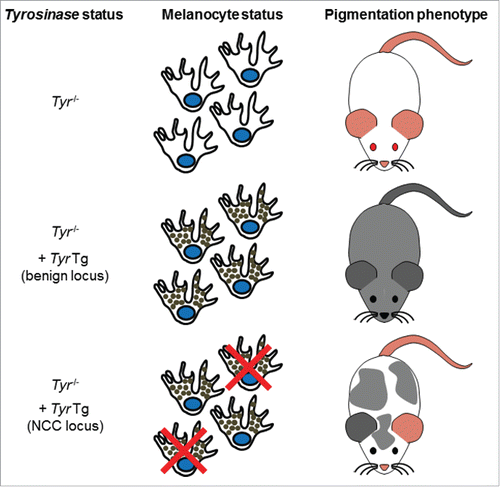Figures & data
Figure 1. Description of the pigmentation-based forward genetic screen in albino mice. Albino mice are unpigmented due to a G to C nucleotide change at position 308 of the Tyr gene, causing a cysteine to serine mutation at amino acid 103 of the Tyrosinase protein. Reintroduction of a functional Tyr gene via transgenesis can rescue the albino phenotype. Tyr transgene-induced pigmentation is uniform if inserted in a locus not important for NCC and not uniform if inserted in a locus important for NCC.


